KC-46 Faces 3 Category One Deficiencies; Two Affect Boom
Posted on
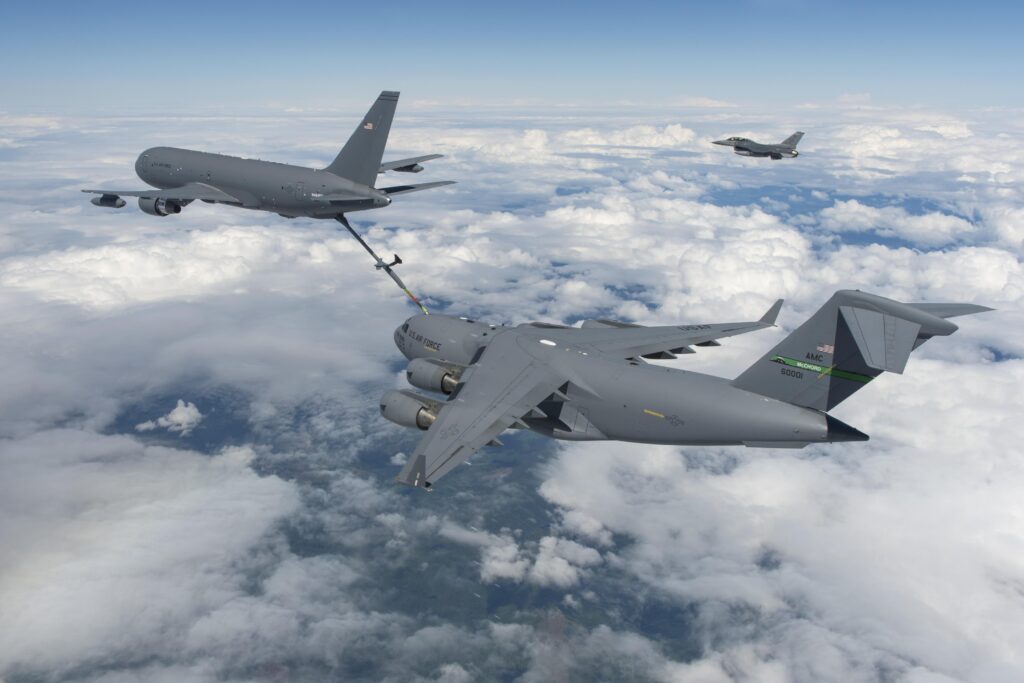
A KC-46 tanker refuels a C-17 transport in mid-air. Sometimes the refueling boom impacts the receiving aircraft, damaging it.
AFA: The four-star chief of Air Mobility Command wants his new KC-46 Pegasus tankers “yesterday,” but the tanker’s boom has a nasty tendency to scrape up planes it’s trying to refuel, as well as two other category one deficiencies, and contractor Boeing has to fix those.
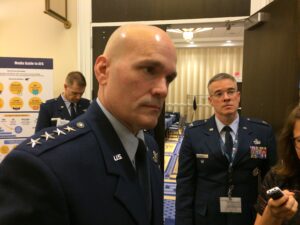
Gen. Carlton Everhart
The paint scraping problem — formally known as “undetected contact” — by itself could “possibly” delay the new planes’ arrival at AMC, Gen. Carlton Everhart said. That date was already pushed back to “late spring” 2018 by previous problems – and there’s a lot of testing left to do.
The program has completed more than 60 percent of its developmental testing, said Lt. Gen. Arnold Bunch, the Air Force’s senior uniformed acquisition officer.
“We’re running into a crunch period (and) we may not be able to get all those test points done by end of year,” Everhart told reporters here. “We’ve adjusting the schedule to make sure we get all our points done….sliding it out to the right.”
How far? He can’t say: “I’m looking at three or four different schedules. I really am, because it depends on who you talk to.”
What’s the problem? Aerial refueling is the logistical lifeline of America’s increasingly challenged air superiority. Tankers refuel Air Force planes in mid-air by extending a rigid boom that plugs into a receptacle on the fighter, bomber, or transport that needs to gas up. (Navy aircraft and many foreign militaries use a flexible hose instead; there’s a long-running debate over which is better). If the two planes don’t line up precisely, the boom can damage the receiving aircraft. Such “Contact Outside the Receptacle” (COTR) can occur with any tanker, but it’s happening more often with the KC-46. How much more often, and how badly, is still being analyzed.

“I don’t know what damage it’s going to do to the other airplanes, so I think we need to have it fixed,” Gen. Everhart told reporters in the hallway here after his formal press conference. “I look at it on a C-17 as I watch there, and I go, ‘that’s a big scrape.'” (Everhart’s a C-17 pilot himself so he might take such injuries personally). There’s also the issue that refueling a stealthy aircraft, such as a B-2 bomber, F-22 or F-35 fighter could result in damage to the stealth coatings. In wartime, that could render a plane useless in a first strike.
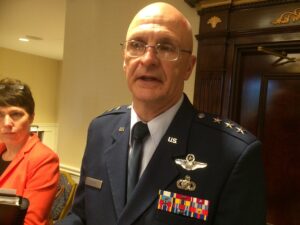
Lt. Gen. Arnold Bunch
The other two deficiencies were detailed by Lt. Gen. Bunch, the military deputy for Air Force acquisition, when Colin asked him later in the day about the extent of the problems afflicting the “low risk” airborne tanker built by Boeing. One involves the “HF transmit turning off when we go into the refueling area.” The other involves “uncommanded boom extension,” which appears to mean that the boom unexpectedly extends after it’s been withdrawn from the other aircraft. Now Bunche was very honest in admitting he wasn’t sure of the exact details and we are waiting for explanations from the Program Executive Officer (PEO) for tankers, Brig. Gen. Donna Shipton. Unfortunately she was on Capitol Hill and couldn’t be reached. We’ll update this story once we know more.
So will the first KC-46 deliveries still come in early 2018? “That’s what I’m hoping,” Everhart said. Could fixing this problem push back that date? “Possibly.”
“That depends on how fast the engineers can get it fixed,” he said. “I’ve been talking to Boeing a lot. They’re looking at the data, they’re looking at analytics, they’re looking at fixing this thing.”
Interestingly, Everhart did say explicitly that whatever’s going on with the boom this time is not related to earlier issues that required a redesign of the boom.
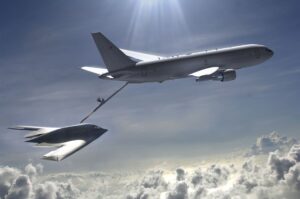
In this artist’s conception, a B-2 stealth bomber refuels from a KC-46. If the tanker’s boom scratches the bomber’s stealth coatings, it might become easier for an enemy to detect.
That said, the boom isn’t the only problem that could delay the KC-46 deliveries. Although the aircraft is a variant of the long-serving civilian 767, the KC-46 still needs three different certifications (supplemental, amended, and military) from both the Pentagon and FAA by the end of the year. That requires a lot of testing in a short time. Then, after the certification tests, the plane will enter its Initial Operational Test & Evaluation under the Pentagon’s notoriously tough independent testers.
As the head of Air Mobility Command, Everhart doesn’t build the planes, he just operates them. His part of the problem is getting pilots, ground crews, trainers, simulators, and so on ready to go as soon as the airplanes show up. At that part, he warned, there’ll be a “familiarization period” as crews learn the new plane, so operations won’t start at once.
To speed the process, the Air Force is deliberately holding off on upgrades and improvements to the KC-46 until it has enough of them in service. For example, Everhart said, the tanker’s Pratt & Whitney engines can automatically transmit performance data to ground crews, letting them get ahead of potential breakdowns and replace or repair parts preemptively – but the KC-46s don’t have this feature turned on and AMC’s not set up to use it, yet. (The F-35’s controversial ALIS maintenance system operates on these lines). Everhart very much wants this kind of “preventive maintenance” across his entire force, but he’s willing to wait and get the KC-46 as-is fielded first before he starts tweaking.
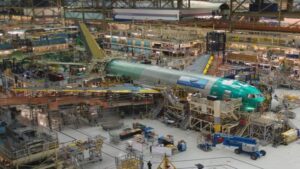
KC-46 under construction at Boeing’s factory.
“That’s going to be an added requirement, so I’m going to have to wait a couple of years until we have a set configuration,” Everhart said.
Overall on the KC-46, Everhart would rather take more time to do it right. “I don’t need an aircraft right now,” he said. “I need the right aircraft when it’s ready.”
Given how long and rugged is the road down which the Air Force and Boeing have driven just to get this far, few would disagree with him.
Subscribe to our newsletter
Promotions, new products and sales. Directly to your inbox.
